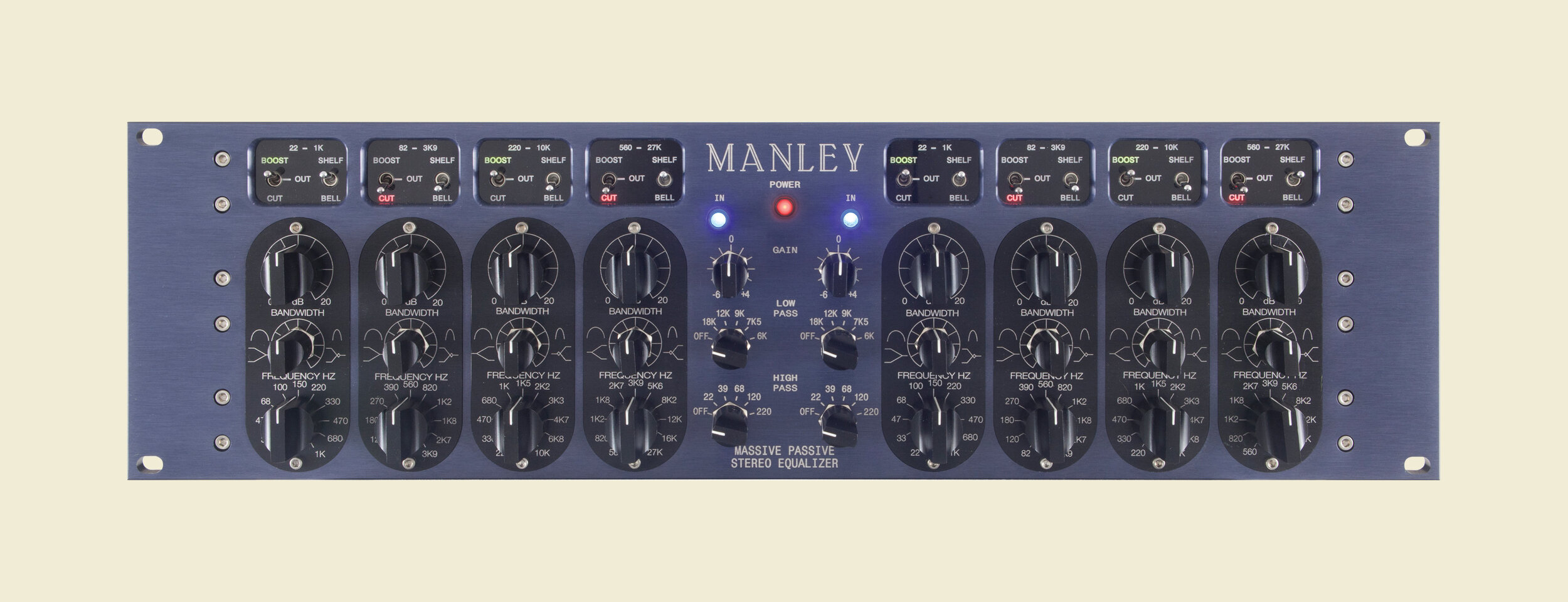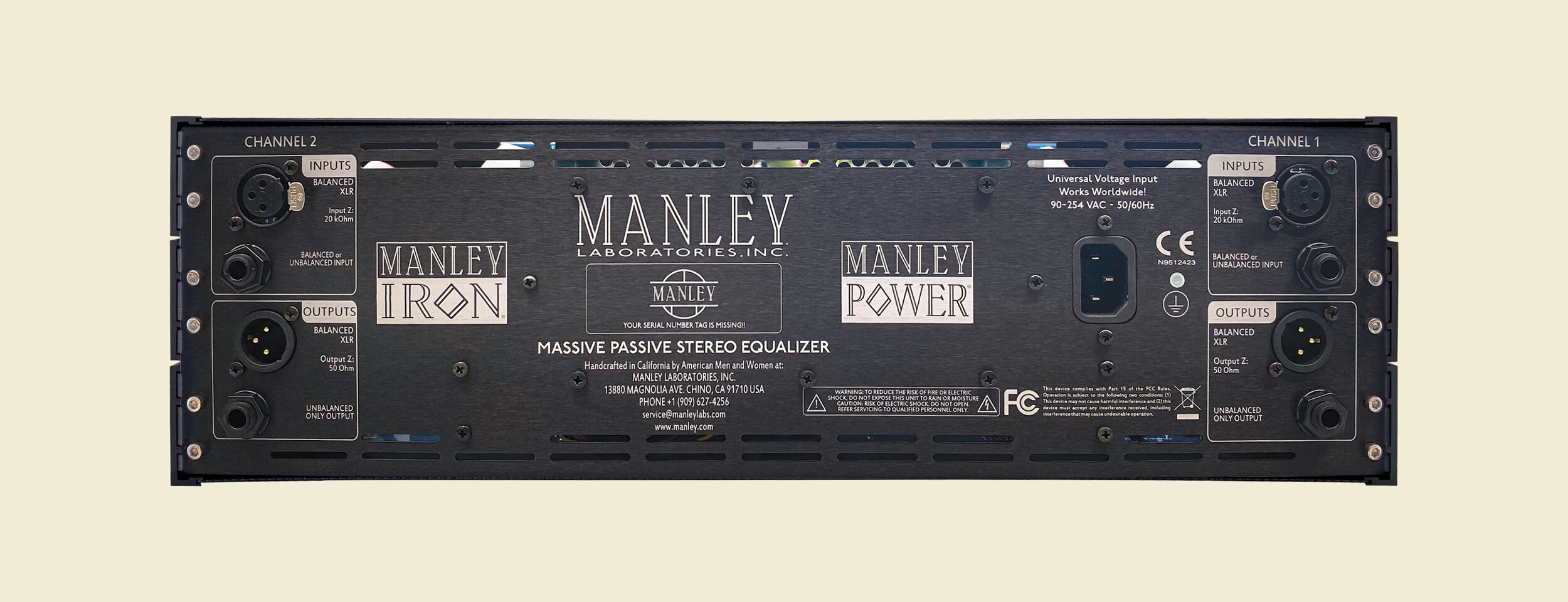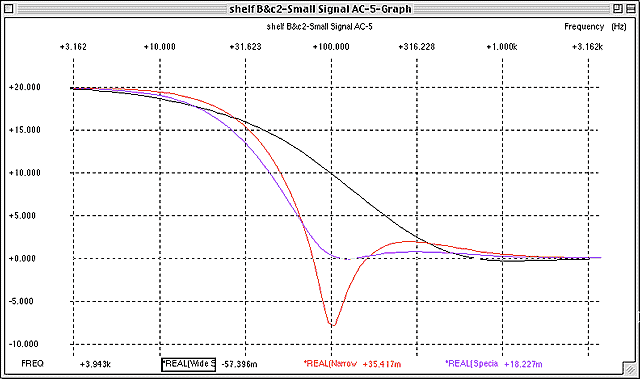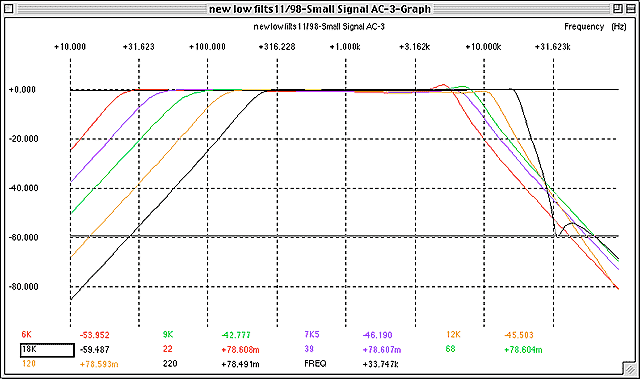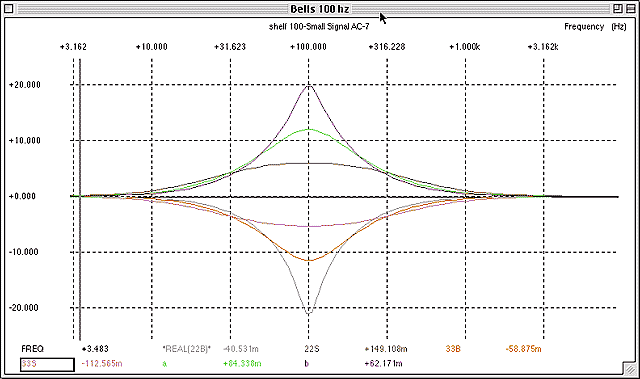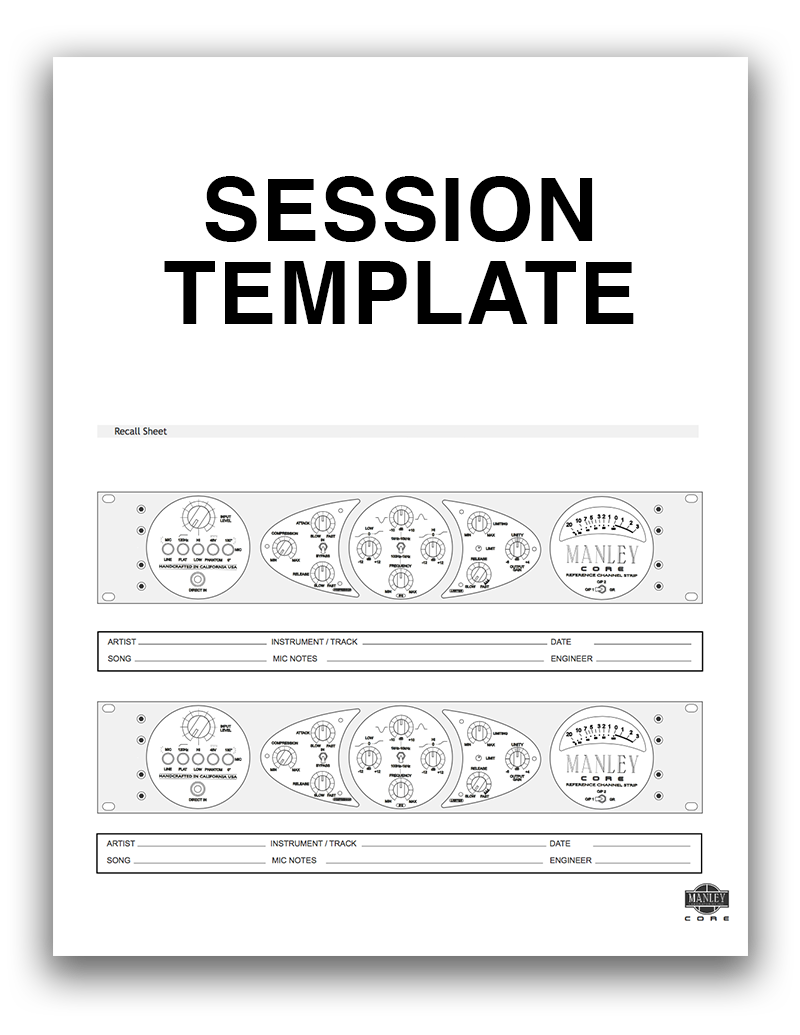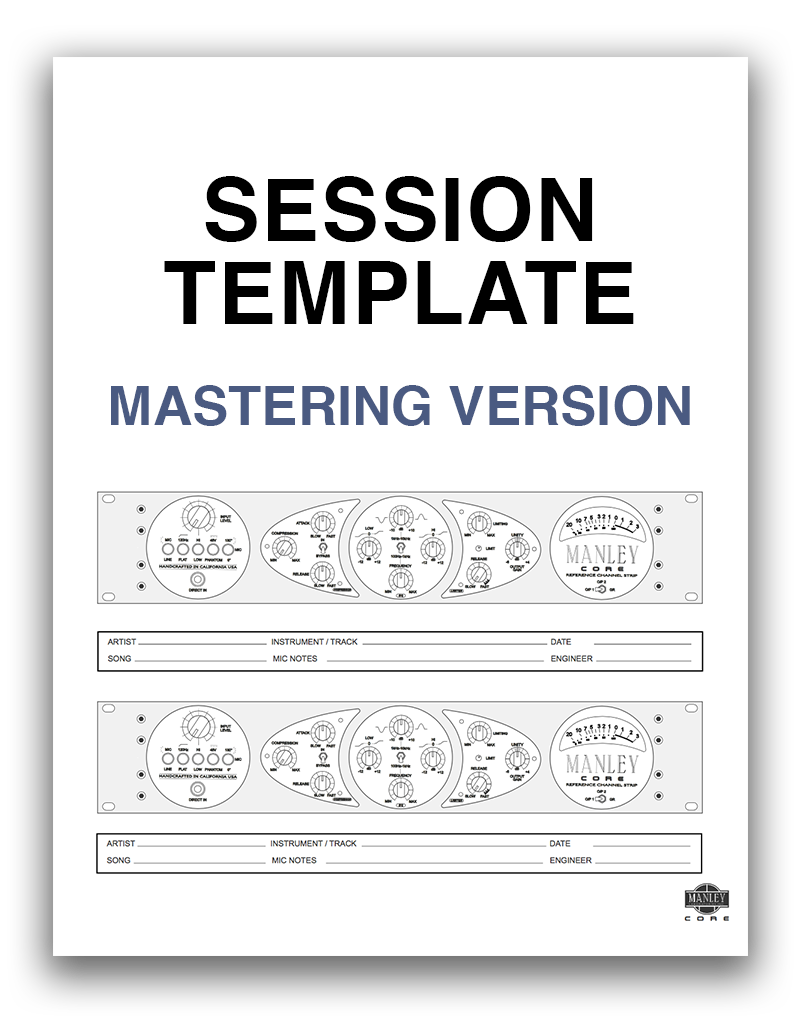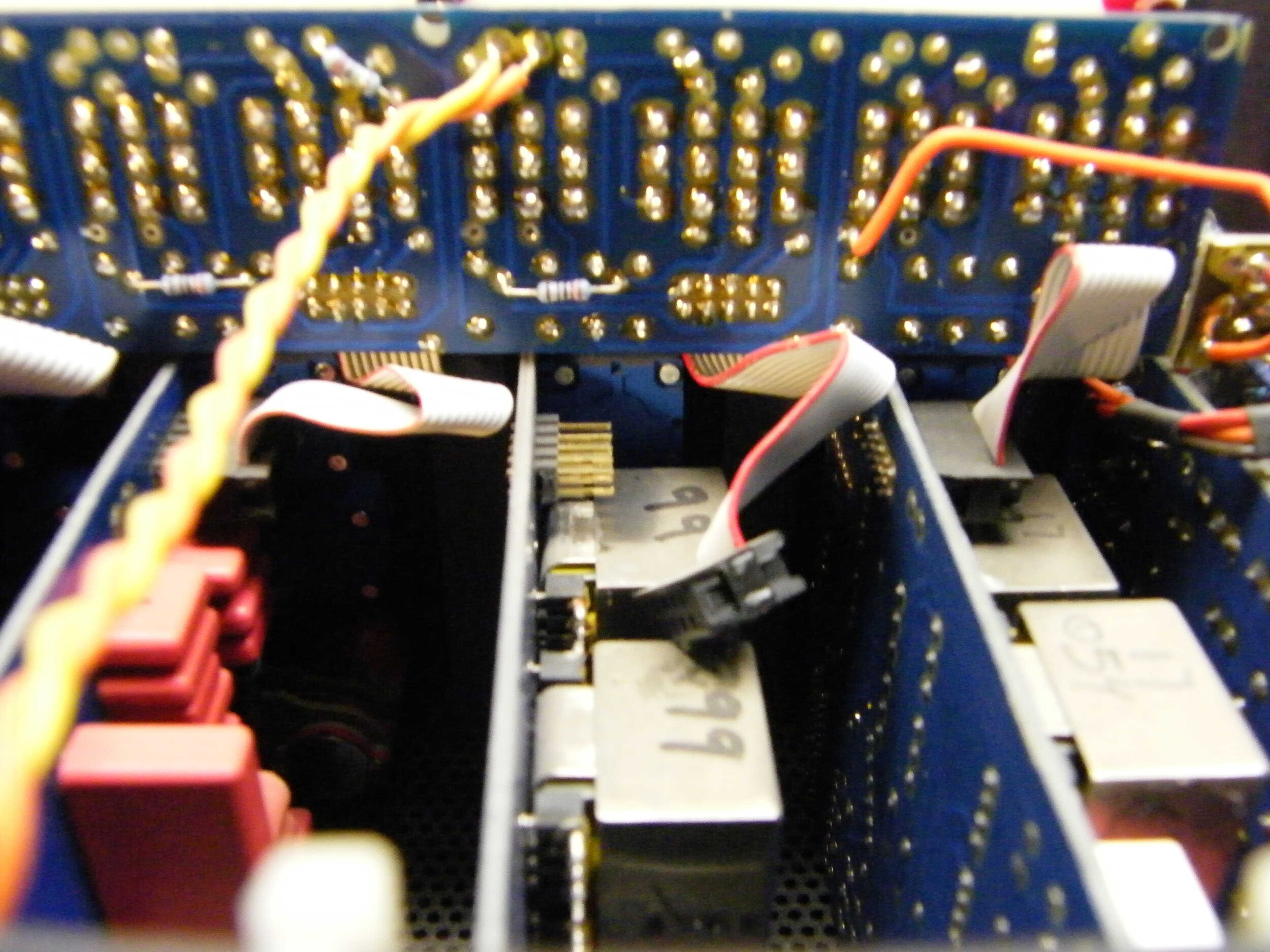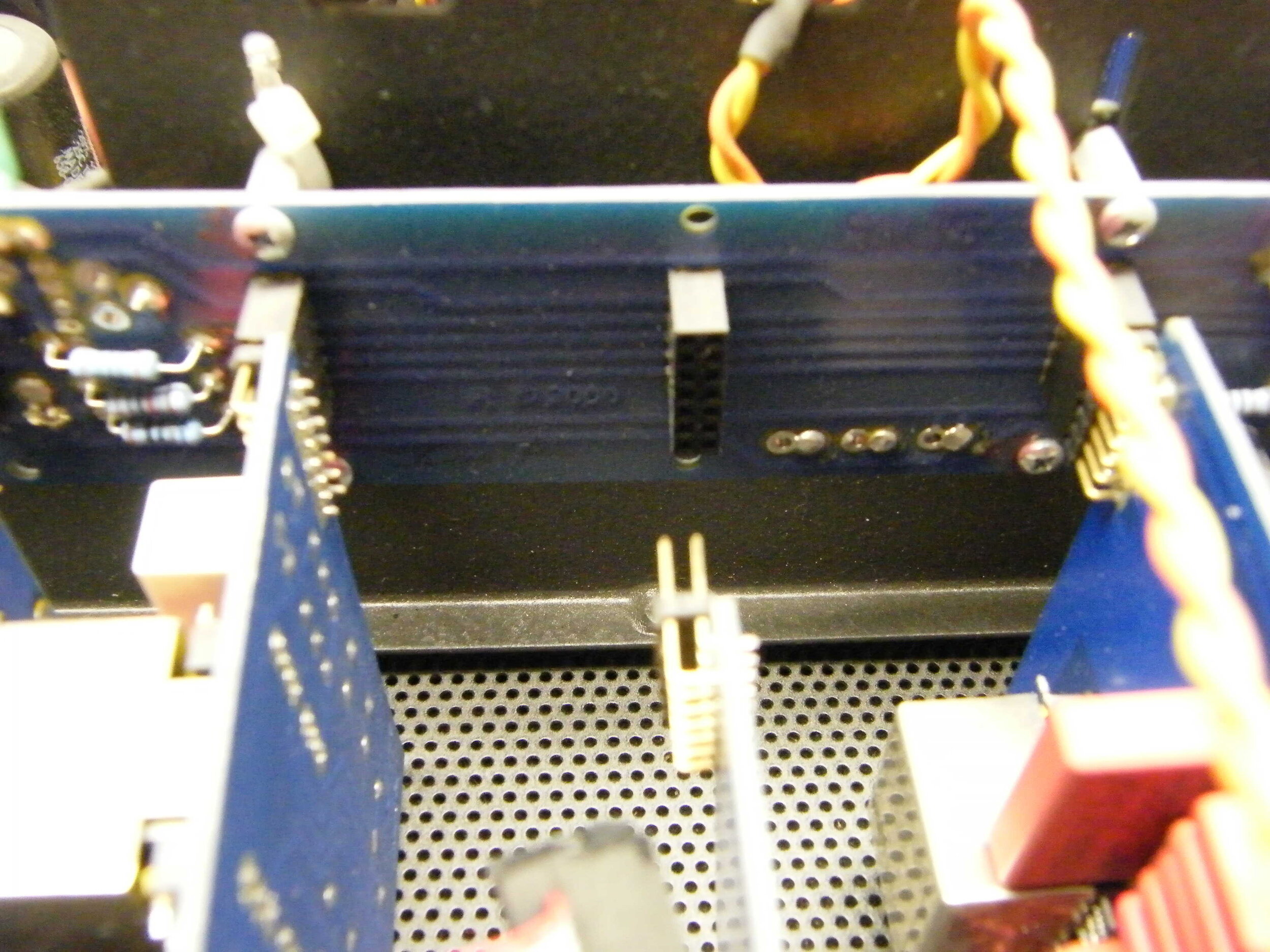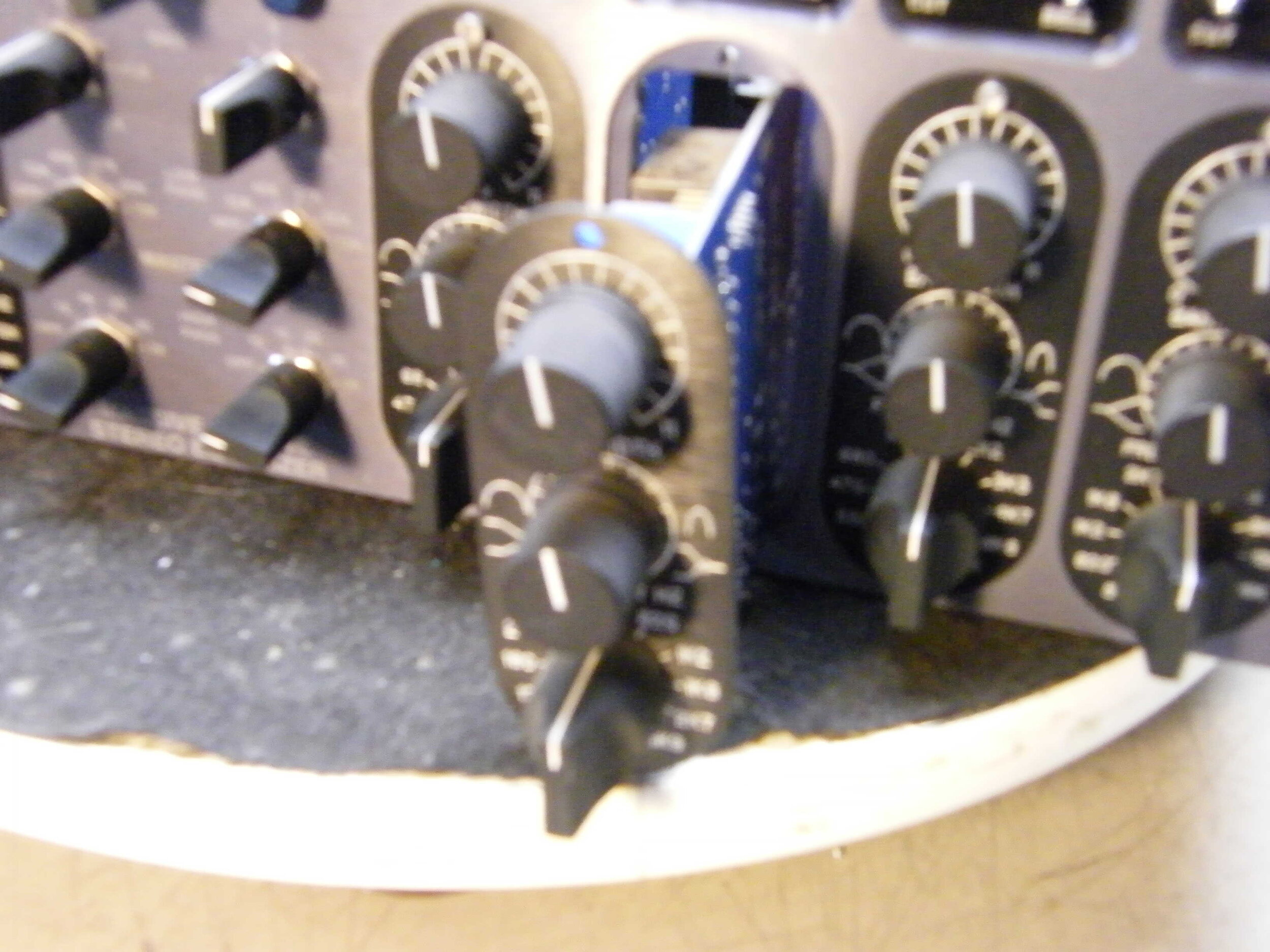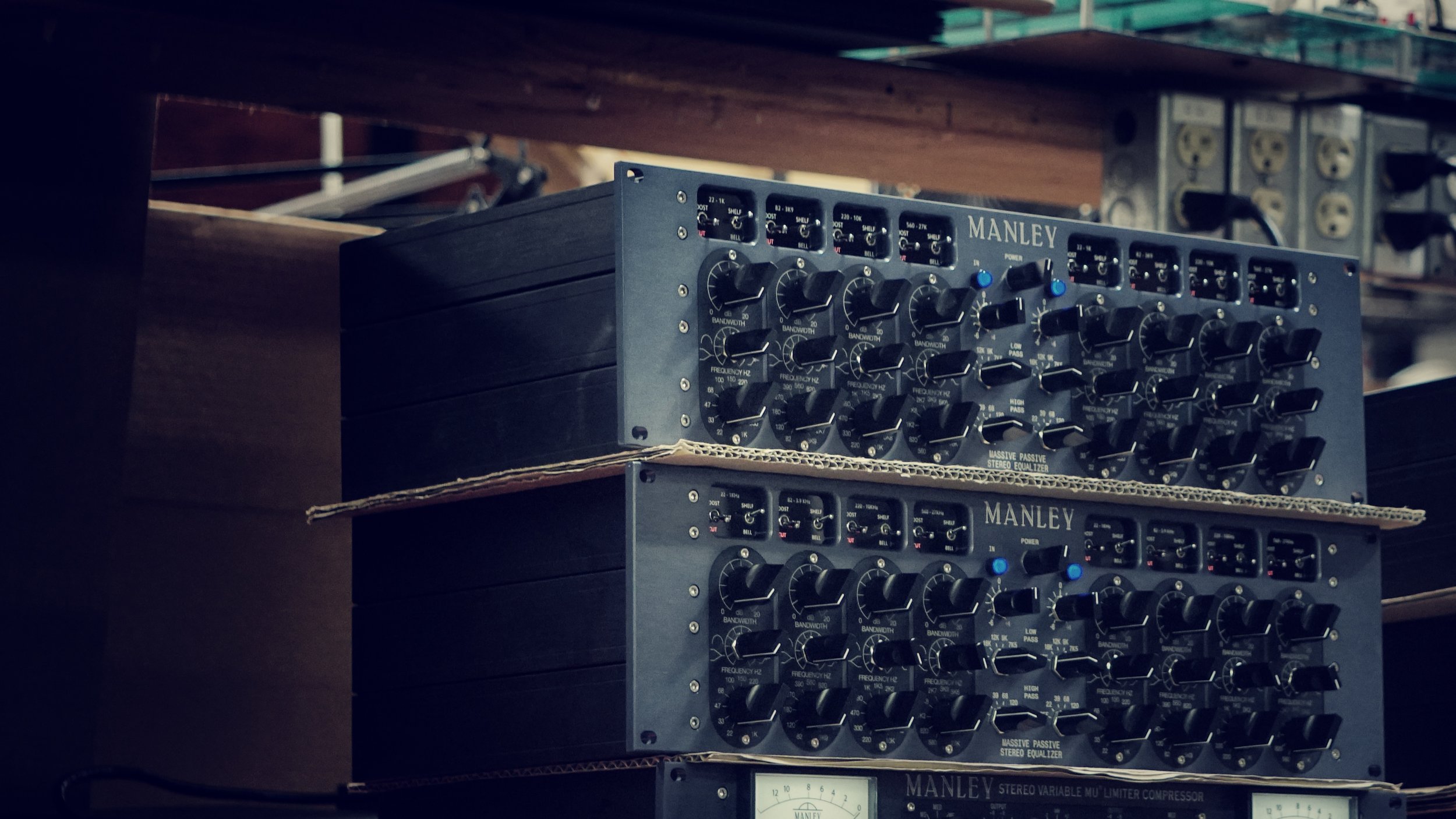
Colossal, timbre-twisting passive equalization using metal-film resistors, film capacitors, and hand-wound inductors to organically sculpt the tone from subtle to vivid. Manley’s tube stages handle huge HF boosts without sibilance and unbelievable fatness without mud. “It’s like a Pultec on steroids.”
A PICTURE IS WORTH A THOUSAND WORDS...
Perhaps, but would photographs of our Variable Mu® Limiter Compressor or VOXBOX® have created their successes alone? You have to hear this gear. You have to use this gear. Put your hands on the knobs and crank 'em. Engineers who have already gotten hold of the MASSIVE PASSIVE have told us: "Why does it make everything sound so much better?", "It's organic and orgasmic.", "It's a f%#king powerhouse.", "It's unlike any other EQ.", "This is IT. The sound I've always dreamt of but couldn't ever get until now."
GOT THE PICTURE?
The MASSIVE PASSIVE is a two channel, four band equalizer, with additional high pass and low pass filters. "Passive" refers to the tone shaping part of this clever new EQ design not using any active circuitry. Only metal film resistors, film capacitors and hand-wound inductors sculpt the sound, kinda like a Pultec EQ on hyper-steroids. Super-beefy, hugely-high-headroom Manley all-tube make-up gain amplifiers deliver your tunes into the next realm. "Massive".... it's a fitting word for this beast. You'll need to experience this.
Creating natural, organic, acoustic tone can only be done with an equalizer that treats the signal with natural methods. The Massive Passive uses simple passive components and exploits their natural qualities rather than forcing a complex circuit to meet an arbitrary clinical or scientific goal. Manley knows that recording and mastering equalizers are used by artists for artistic goals and we balanced this design with a little more art than science. The Massive Passive is intended both for the most radical EQ sometimes needed for tracking as well as the most subtle shadings for vocals and mastering. It is designed to be a fundamentally different EQ but incorporates the best strengths of Pultecs, choice console EQs, parametrics and graphics. The difference is that the Massive allows twice as much EQ with half the coloration. It allows huge HF boosts without sibilance problems and unbelievable fatness without mud. This is unique. Being different also gives it some quirks and idiosyncrasies that will spark your creativity and sense of audio adventure. We could attempt to use dozens of superlatives to describe the sounds, but really, you have to experience it yourself. Words cannot do it justice. The astute reader will notice a lack of "buzz words" and that the Massive Passive is not built around gimmicks, plagiarisms, or conventional techniques. However, it is built to complement our Variable Mu® Limiter Compressor for instance... This combo could just be the ultimate processing chain. It's already a Mastering fave. To this end we finally have a new dedicated Mastering Version Massive Passive Stereo EQ available too.
Update: As of January 2020, the Massive Passive now incorporates our MANLEY POWER® Switch-Mode Power Supply.
DRIVEN BY MANLEY POWER®
The MANLEY POWER® power supply is an innovative design developed specifically for Manley Labs, specifically for High Voltage vacuum tubes, and specifically for audio by the world expert team in this technology led by Bruno Putzeys. Proven reliable and sonically superior in the Manley CORE, this power supply provides 300 Volt DC rails to run the vacuum tubes, beefy 6 Volt lines to power them up, along with several other voltage rails for the phantom power and various solid-state control voltages. High Voltage = High Headroom, folks. You will not get near this sonic performance with in any 500-series design. Trust us. This is Massive audio excellence which starts with this superior power supply. All lines are importantly regulated, low impedance, efficient, and super-quiet in this low radiating high frequency design. The universal mains input accepts any voltage or frequency from anywhere in the world making travel with the Massive Passive a breeze.
Please note: This updated Massive Passive with MANLEY POWER is distinguishable from the previous version by its red backlit power button on the front panel, as opposed to the black-knob rotary switch used in prior versions.
“It’s a perfect combination between modern convenience and the great, classic, sweet EQs that I love, like the Pultecs. It’s probably – no, almost definitely the best analog EQ in existence.”
– F. REID SHIPPEN –
(Kenny Chesney, Keith Urban, Jonny Lang, Ingrid Michaelson)

DETAILS
THE FILTERS
HIGH PASS FILTERS
22, 39, 68, 120, 220 Hz, OFF
LOW PASS FILTERS
18 kHz, 12 kHz, 9 kHz, 7K5, 6 kHz, OFF
There are 5 High Pass Passive Filters and bypass, plus 5 Low Pass Passive Filters with bypass. We made them extra steep. Why? So you can remove the garbage and not mess up your music. The way these filters interface with the parametric EQ bands simply sound beautiful. The highest Low Pass filters get even steeper. Attack drums, guitar stacks, and other tough jobs. Make "telephone" voice sounds for special effects.
PARAMETRIC FREQUENCIES
LOW
22, 33, 47, 68, 100, 150, 220, 330, 470, 680, 1K
LOW MID
82, 120, 180, 270, 390, 560, 820, 1K2, 1K8, 2K7, 3K9
HIGH MID
220, 330, 470, 680, 1K, 1K5, 2K2, 3K3, 4K7, 6K8, 10K
HIGH
560, 820, 1K2, 1K8, 2K7, 3K9, 5K6, 8K2, 12K, 16K, 27K
Each band can be bypassed or set to boost or cut. This provides twice the control resolution over conventional EQs. It also eliminates the problem of a center detent not guaranteeing flat response.
Each band is capable of 20 dB of boost or cut combined with amazing headroom and freedom from clipping.
Steep LP and HP filters for maximum effectiveness and achieved passively for minimal coloration. Low Pass Filters get progressively steeper as the frequency point rises. All of the High Pass Filters, and the Low Pass 6K, 7K5, and 9KHz Filter slopes are 18 dB/octave, the Low Pass 12kHz filter has a 24dB/octave slope and the 18kHz filter has a 60 dB per octave slope.
Transformer balanced floating outputs for ease of installation and a touch of desirable flavor. These too were custom designed for the Massive Passive to accommodate the huge boosts possible.
Manley quality, Manley engineering, and the "Manley Sound".
SPECIFICATIONS
SPECIFICATIONS 2020 Version Driven by MANLEY POWER®
Inputs: Balanced XLR & 1/4” (accepts unbalanced)
Outputs: Balanced XLR (accepts unbalanced) & Unbalanced 1/4”
Level +4 dBu nominal
Bypass Switch bypasses EQ & tube circuits: 1/4” Jacks (not hardwire)
Bypass Switch bypasses EQ, tube circuits & Input Buffer: XLR Jacks (Hardwire Bypass)
Gain Trim: -6dB - 0dB - +4dB
44 Frequencies (roughly 1/4 octave spacing)
Frequency Range: 22 Hz to 27 kHz
EQ Boost/Cut Range : Maximum 20 dB boost or cut
Nominal Q range: 1.5 to 3 (uniquely active in shelf modes)
Maximum Input Level: +21dBu
Maximum Output Level (1kHz sine, 1% THD+N, BW 22Hz-22kHz, Load 100kOhms): +35dBu
Frequency Response (@ +4dBu, Load 100kOhms): -0.1 dB @ 10Hz, -1 dB @ 60 kHz
Total Harmonic Distortion (THD+N) (1kHz sine @ +4dBu, BW 22Hz-22kHz): 0.006%
Output Headroom (Reference to +4dBu): 31dB
Dynamic Range (Reference to Maximum Output): 123 dB
Noise Floor Typical (Unity Gain): -88 dBu (A-Weighted)
Signal to Noise Ratio (Reference to +4 dBu, BW 22Hz-22kHz): 92dB
Input Impedance: 20kOhm
Output Impedance: 150 Ohm
Tube Complement: 2 x 5751, 4 x 6922
Auto-mute warmup delay = 20 seconds
Power Consumption (120/240VAC): 44 watts
Mains Voltage & Frequency (VAC/Hz): Internal Universal Power Supply 90-254 VAC / 50-60Hz
Size (3U): L 19” x W 10” x H 5.25”
Unit Weight: 15.5 Lbs.
Shipping Box: L 23” x W 15” x H 10”
Shipping Weight: 26 Lbs.
FEATURES
All-Passive tone sculpting circuitry
Unique Shelf curves use the "bandwidth" control
Overlapping and Interleaved Frequency choices
Every band switchable to shelf or bell
Vacuum tube make-up gain and line drivers
Parallel symmetrical topology
Premium components throughout
Passive HP and LP Filters plus gain trims
Units built after 2016 or 2017 MK2 revision have Hardwire Bypass.

REVIEWS
“It’s a perfect combination between modern convenience and the great, classic, sweet EQs that I love, like the Pultecs. It’s probably – no, almost definitely the best analog EQ in existence.”
– F. Reid Shippen (Kenny Chesney, Keith Urban, Jonny Lang, Ingrid Michaelson)
“Many EQs are too pointy…the Massive Passive just follows the music.”
– John Webber (Mastering Engineer, Air Studios)
"For many years the Massive Passive EQ has been an important part of my sound, and I won’t work without it. The workmanship and sound of Manley is top notch."
- Inon Zur, Composer (Starfield, Fallout, The Elder Scrolls, Prince of Persia)
“The Massive Passive is pretty much always in my mastering chain. The make-up amplifier, with its multi valves, gives things real warmth and depth. The mid-range is so clean, and perfect for vocals and snare. A great bit of kit, brilliant for cutting purposes too. I’d recommend it to anyone who loves that analog sound.”
- Alex Wharton, Abbey Road Mastering
"With its innovative circuit design, feature set, stunning audio clarity and its sound, the Massive Passive is clearly in a league of its own."
- George Petersen, Mix Magazine, August 1999
"...either I am losing my touch, or this is the best outboard EQ I have encountered."
- Studio Sound Magazine, August 1999
"Do not pass go, do not collect $200, go directly to your dealer and buy it... NOW!"
- Mike Clute, Audio Media Magazine, October 1999
"An immediate classic piece of gear; a Pultec on steroids; a must for anyone working in the analog domain."
- Dr. Fred Bashour, Pro Audio Review, October 1999
"It's been a long time since an EQ really brought on a bad case of gear lust, but the Massive Passive has."
- Sean Vincent, The Mix, April 2000
"If you want to take the audiophile experience to the next level, this is your tool."

RESOURCES
Note: The above manual is for current production units, which utilize the MANLEY POWER™ switch-mode power supply. If you are looking for a manual for the pre-2019 Massive Passive with the linear power supply, click here.
The linear supply manual applies to serial numbers before MSMPx3061 for the regular Massive Passive, and serial numbers before MMMSMP871 for the Mastering version.
SPECIAL EDITION: MASSIVE PASSIVE XXV
The Manley Massive Passive has been organically sculpting sound all over the world since its release in 1998, and we commemorated its 25th anniversary with this special XXV Limited Edition.
With a sexy deep cobalt blue faceplate and custom laser engraved artwork, this special unit is limited to a run of only 100 pieces worldwide.
SPECIAL EDITION: MASSIVE PRIDE
In celebration of LGBT Pride Month 2020, Manley Labs announced the MASSIVE PRIDE: a special edition of our classic best-selling MASSIVE PASSIVE Stereo Tube Equalizer with rainbow cosmetics derived from the original 1978 gay pride rainbow flag. This special edition was limited to 50 units worldwide.
At Manley Labs, we believe in equality for all human beings regardless of gender, race, or sexual orientation, and thus we donated our proceeds from sales of this unit (totaling $30,000 USD) to the Human Rights Campaign: https://hrc.org
FREQUENTLY ASKED QUESTIONS
1) How does the Massive Passive compare to other high end EQs?
It probably can't be compared. In fact, it is so different, that perhaps we shouldn't have called it an "equalizer" so that people wouldn't expect that it is comparable. Because the Massive Passive has 3 knobs per band, experienced engineers expect that it would be similar to conventional parametric EQs. However, the "Massivo" is "passive" (hence the name) and because it is a parallel design and because it provides entirely different shelf curves, it is essentially a new breed of tone control. The controls are different in use and the sound is remarkably and refreshingly different. Are comparisons really necessary?
2) Should I replace my favorite EQ with a Massive Passive?
We hope your next favorite EQ is the "Massive" but don't sell off your current EQ yet. Each will do things the other doesn't, and the combination may be the ideal chain. You may discover that the Massive excels at major tasks and normally results in an "unprocessed", "natural" final sound but may not be so great at narrow Q notches or "bumps". Your favorite EQ will probably be more suited for touch-ups and little details but will tend to show its personality if used for more than 3 or 4 dB of boost or cut.
3) What is the Q range?
In basic terms, the range is about from 1 to 3 but... Again, this is not a conventional parametric and doesn't have a conventional Q knob. It is called "Bandwidth" on the Massive to differentiate it from "Q" and hopefully allow people to relate it to the "Bandwidth" control on Pultecs. To provide a normal "Q" control would require an "active opamp circuit" and cannot really be done in a purely passive design. The "Bandwidth" control is similar to "Q" but will interact with the "dB" control and does not have the wide range of most Q controls. Perhaps, more accurate names could have been "Damping" or "Resonance". However, the control range is musically useful and in many ways more natural than conventional "Q" knobs which are electronically contrived both in circuitry and sonically. Also the"Bandwidth" is extremely useful in "Shelf" modes which is unique and essentially a new EQ control that allows Pultec-like phatness and phresh "air".
4) What is the primary intended application?
Music...this EQ is equally suited for tracking, mixing and mastering. It is intended as a primary EQ that you can use as a first choice for almost everything. It was also designed to sound different from other EQs so as not to be just a slightly differing flavor from your current parametrics and console EQs. Vive la difference.
5) Is it a real "parametric EQ"?
It depends how one defines "parametric EQs". We call it "quasi-parametric" or "passive-parametric" because of the difference between "Q" and "Bandwidth" knobs. We define a "true parametric" by George Massenburg's original description which was a non-interacting continuously variable boost/cut, frequency and Q on bell curves. The Massive uses a switch for frequency, allows shelf curves and the "dB" and "Bandwidth" controls interact and even the 4 bands interact. But it does have 3 knobs per band, if that is your definition.
6) Aren't the various interactions a problem?
No..... This is why the Massive Passive tends to sound "natural" and "organic" and other EQs tend to sound electronic and synthetic. Interactions are natural and part of real life and the physics of sound and music. It may require the user to learn a little and may result in some bizzarre "looking" knob settings but the proof is in the listening.
7) This thing isn’t working. I just bought it. For this amount of money, it needs to function.
OK, listen up: the XLR INPUTS and XLR OUTPUTS are TRANSFORMER-COUPLED so that means you HAVE TO have something connected to all of the pins.
PIN 1: GROUND
PIN 2: HOT (+) POSITIVE
PIN 3: COLD (-) NEGATIVE
You cannot "float" Pin 3. You can GROUND it if you are driving it from an unbalanced source. But you cannot hook it up to "nothing".
Pay attention when interfacing with some of these interfaces like your Apollo. If you are using TRS - XLR cables, make sure that it is wired:
TRS TIP = HOT (+) to XLR Pin 2
TRS RING = COLD (-) to XLR Pin 3
TRS SLEEVE = GROUND to XLR Pin 1
or
TS - XLR cable, make sure it is wired:
TS TIP = HOT (+) to XLR Pin 2
TS SLEEVE = GROUND to XLR Pin 1 AND Pin 3
8) Today I started experimenting with the unbalanced jack outputs, super cool. Although, while outputting to the 1/4 jacks, the "in" button turns off all audio in the "out" position, making it hard to A/B. Is this part of the design, and if so is there anything I can do to solve this issue?
If you use the 1/4" inputs along with the 1/4" outputs, then BYPASS should work as expected.
Presuming you are coming in via the XLR inputs, during BYPASS mode those will shoot the inputs directly to the XLR outputs.
The 1/4" outputs are on the primary side of the output transformers and do not participate in the Hardwire Bypass mode of the XLRs.
9) Can I order a "mastering version"?
Yes! Just scroll down.
10) Can I upgrade my regular version to the "mastering version"?
No, sorry, not without rolling out all of the bandcards, knobs, and oval inserts, unbuilding the whole front panel, changing out the faceplate and the filters, etc. It is just too much work and not economically feasible. It is best to buy the Mastering Version if that is what you need.
11) I just bought a brand new Massive Passive. How do I know if it is a new unit with the SMPS “MANLEY POWER®” or if has the older linear power supply?
Linear PSU units have not been in production since late 2019. All new regular and mastering units since then are driven by MANLEY POWER®. You can easily tell by the power switch. Black rotary knob = Linear PSU. Red push button = SMPS MANLEY POWER®.
Also by the operating Voltage callout on serial number sticker: 100 to 250VAC means it works worldwide and this is using the universal voltage MANLEY POWER® SMPS. The single voltage declaration aka “120V” or “220V” means the linear power transformer was configured for that voltage at the factory and the unit only works at that mains operating voltage.
12) What are the sonic differences between the older linear units and the new power supply?
The new PSU certainly is better sounding according to my listening tests in the mastering studio with other engineers also hearing the difference every time. In general because it is quieter, you hear the silent passages as “blacker blacks” while the high frequencies seem faster and cleaner. It is a subtle difference if you could not perform a direct A-B comparison as we were able to do. But even so, under blind A-B testing, we were able to pick the unit driven by MANLEY POWER® every time. And there are many other benefits, outlined on our the MANLEY POWER webpage...
One of the most important things is MANLEY POWER® is universal meaning you can travel around the world with your Manley Massive Passive without worrying about changing voltages or using an outboard transformer....
The new power supply is quieter, faster, flexible, no hum, lighter to carry, easier to service, etc etc etc. So, no, I would not look back!
13) Can I trade up my old Manley Massive Passive that has a linear power supply for one of the new MANLEY POWER® SMPS ones?
No, sorry. We do not do trade ins. Please if you want a new unit, sell your linear supply Massivo on Reverb or eBay or to your best buddy and buy a new one with the MANLEY POWER® SMPS!
14) Can I upgrade my linear power supply old Massive Passive to the new MANLEY POWER® SMPS version?
Sorry, no. There are too many changes to the new Manley Massive Passive units running from the MANLEY POWER® SMPS and it is not worth it to basically only retain the side chassis extrusions and the band-cards! Everything else in the unit is brand new: the back panel and I/O cards, the faceplate, the main audio vacuum tube PCB, and of course, the new MANLEY POWER®ƒ module and associated wire harnesses. It would be too much work and expense to unbuild and rebuild an older unit.
15) I just bought a brand new Massive Passive. The red power light is on in a dimmed state when plugged in. It gets brighter when turned on. Is this normal?
Yes. That is how it works. The RED LED in the power switch will glow in a dimmed state to indicate that power has been applied to the unit and will go into its full bright state after it has been switched on. Makes sense, no?
16) I just bought a brand new Massive Passive with the SMPS power supply, you know, the one with the red button power switch, not the black knob. It’s making a bunch of weird noises like radio frequency or squealing noises. It’s not exactly hum, and I’m not sure what it is. It’s kinda buzzing and swirling?
If it is happening on both channels and isn’t some kind of noisy tube issue, it sounds like you have some kind of system grounding problem. Try removing the internal Ground Jumper following along from page 18 of your Owner’s Manual and see if that doesn’t cure the issue.
17) Help! One channel is about 1dB louder than the other one!
LOOK in your Owner’s Manual and read about how to adjust the GAIN TRIMMER. Use a small screwdriver or “pot tweaker” and adjust the gain on that channel just like the Owner’s Manual tells you.
18) What tubes do I need?
Serial numbers before MSMPx3060 driven by the linear PSU regular units use 5751 x 2 as the input tubes and 4 x 6414 (or 12BH7) as the inter-stage and output tubes.
Serial numbers after MSMPx3061 driven by MANLEY POWER® SMPS PSU regular units use 5751 x 2 as the input tubes and 4 x 6922 as the inter-stage and output tubes.
Serial numbers before MMMSMP870 driven by the linear PSU Mastering units use 12AU7 x 2 as the input tubes and 4 x 6414 (or 12BH7) as the inter-stage and output tubes.
Serial numbers after MMMSMP871 driven by MANLEY POWER® SMPS PSU Mastering units use 12AU7 x 2 as the input tubes and 4 x 6922 as the inter-stage and output tubes.
18) The 1500 Hz frequency band is not functioning at all on one of the channels. I need to send this Massive Passive EQ to you for repair.
Before encountering what may be an unnecessary expense, I would advise you to remove the top lid and re-seat the non-op band card, and if that doesn't cure the issue, swap it with the other channel to determine whether or not the bandcard is defective or just needs to be reseated. There is a connection to the back plane buss board and also a ribbon cable connection to pay attention to.
How to do that is first UNPLUG the unit from the wall! We don’t want you to get shocked. Next, remove the top lid screw using a #1 Philips screwdriver and then slide the top cover out towards the back of the unit. Put that aside. Next, unplug the ribbon cable from the offending bandcard, then, remove the front oval insert's two stainless steel hex allen cap head screws, and pull the whole band card assembly out towards you. Then reinstall and reseat the rear connection and plug the grey ribbon cable. Plug the unit back into your system and see if just reseating that bandcard that didn’t fix the issue.
If the problem is still there, exchange the bad bandcard with the other channel’s mating bandcard and verify that the problem follows the bandcard If it does then you can just send the bad bandcard to us for repair or exchange saving the expense of shipping the entire unit back to us in Chino, California.
20) OK actually I think one of the Frequency Select switches is making intermittent contact. Can I clean this switch or do I need to replace it?
I have cleaned these before. You have to first remove the bandcard to access the back of the switch (See FAQ #15 above) and loosen (not remove) the 2 little nuts that hold the switch together. Pry a little space open between the sections of the switch, and spray a bit of contact cleaner such as DeoxIT® G5 in those gaps.
21) Nope! The problem stayed on the same channel so I have determined that the bandcard is not the problem. What now?
This would indicate failure of one of the front panel toggle switches or the relays associated with that bandcard that do not live on the bandcard. So we need to look at those searching for a bad connection or bad switch/relay on those parts.
22) My problem is with one of the FILTER switches. When I move it, it is staticky and causes the right channel to cut out completely at times. Requires pressure on the knob or rotation to regain signal. I thought it may just need the contacts cleaned on the switch?
Sounds like either the switch is dirty (unlikely, but possible with those gold contact Grayhills!)
or
there is a bad PCB connection at the switch to PCB (that might need some solder touchup)
or
there is a bad connection at the card's rear connector (unlikely with the gold pins/sockets, maybe a bad solder joint on the header or pins?)
You can safely slide off the top lid and see if you can force it to misbehave by poking around that filter card with a plastic Sharpie pen?
Don't poke your hand around the tube board or power supply board and get shocked! See if you can isolate where the problem is.
23) My knobs are kinda loose. Can I buy some o-rings from you to provide more physical resistance to them?
Sure thing, but before you do, have a look and see if you already have the o-rings installed under the knobs. If you do, try this first:
Remove a knob.
Use a small file to file flat the 2 places where the set screw "dug in" to the blue shaft so that the set screws won't return exactly there.
Reinstall knob pushing it into panel and into the existing o-rings while snugging the set-screws.
This will enable the knobs to live a little closer to the faceplate and sandwich the o-ring as intended.
24) All the tubes on one channel are dark. There is no audio on that side too, obviously. What’s wrong?
This applies to units with the linear power supplies only. Probably one of the 7812 regulators died. There is one per channel on the rear panel. These are easy to replace with just a screwdriver as the TO-3 parts are socketed. Just be sure to re-deploy the mica insulation washer and smear a layer of thermal paste under the regulator so that it will remain electrically isolated from the rear panel while staying thermally coupled to it!
25) Help! I live in a very humid climate, and the rotary power switch on my older linear power supply Massive Passive has become difficult to turn. How do I replace the internal connecting rod?
THE MASTERING VERSION
...WITHOUT breaking your bank account, thanks to these interesting mechanically detented knobs for the GAIN and BANDWIDTH controls! These knobs are of our own design. They are a clever two-part metal design using a ball and spring detent system. They ensure repeatability and a good, positive feel, without the incredible cost and space problems tons of Grayhill switches would have caused.

Some notes pertinent to the Mastering Version:
The Massive Passive is a passive design and not a "true parametric". A true parametric implies non-interacting controls. In the Massive Passive, the "GAIN" and "BANDWIDTH" controls DO interact (on purpose). We cannot create a "GAIN" switch that is set up for "consistent" 1/2 dB steps. When you change the "BANDWIDTH" the step size must and will change. On the regular version, you get a full 20dB boost or cut only when: the bandwidth is fully clockwise (narrow) in bell mode or fully counter-clockwise in shelf mode. Here on the Mastering Version, this maximum boost or cut is 11dB. Conversely at the widest bell, the maximum boost or cut is 6dB and the narrowest shelf maxes out at 12 dB. A similar situation is also true for the bandwidth detents. So in this new Mastering Version, do not expect a certain dB change per step as it will vary according to where the bandwidth is set. But whatever the step sizes are, they will be repeatably 16 steps. The FREQUENCY select is already detented as it is and always has been a Grayhill switch. It also interacts in shelf mode.
On a similar note, the Massive Passive is a "parallel design" and not the conventional "series design". This means the bands interact with each other too. It is possible, to set a band to boost 20 dB but if another band is boosting near or at that frequency, very little will happen. On a conventional EQ the two bands "add" and you would be boosting 40 dB into clipping. Because the bands interact, predictable step sizes are unrealistic, however, with the Mastering Version, you will be able to repeat settings (if you log them of course). The price paid for interacting bands, is a better sounding EQ and bizarre looking settings (on purpose).
Unlike virtually every other EQ, the Massive Passive allows much more EQ without sounding "processed". Where 5 or 6 dB is about all one could attempt with other EQs in mastering, the Massivo amazes engineers with how much EQ they can do and get more "natural" results at the same time. We could have squeezed 11 position Grayhill switches in the modules if we had wanted 1/2 dB steps but then the maximum range would have become only 5.5 dB. Remembering what we stated above, the minimum range would then become about 1.5 dB with approximately 0.2 dB steps. This approach would have essentially thrown away most of the useful range the unit is capable of. Going with these special mechanically detented knobs which use the same pots underneath that the normal Massivo uses, we get nearly all the range of the normal version, but with the repeatability of the detents.
We have also custom tailored the FILTERS in the Mastering Version specifically for Mastering purposes, moving them lower and higher than the normal version, with mastering engineers specifically in mind. The slopes are all 18dB per octave on the mastering filters except for the highest 52kHz Low Pass filter which has a 30 dB/octave slope. If you are looking for drastic effects (like telephone sounds) then get the normal version. These filters are really geared for mastering engineers.
High Pass Filters: OFF, 12, 16, 23, 30, 39 Hz
Low Pass Filters: OFF, 52kHz, 40kHz, 27kHz, 20kHz, 15 kHz
Additionally, the Master Gain Trim controls in the Mastering Version are true 11 position 1/2 dB stepped Grayhill switches set up for a range between -2.5 to +2.5 dB of master gain trim. This allows more confidence in left/right matching and calibration. The gain change voltage divider occurs before the final tube amplifier stag and after all of the passive EQ circuits.
We have seen in the past that the only engineers who have asked about a mastering version had yet to try the Massive. Using your previous extensive and intensive experience with other EQs may be a mistake, especially if you expect the Massive Passive to be roughly similar to them. It isn't. Please, try it first, then decide.
MASTERING VERSION FEATURES
All-Passive tone sculpting circuitry
Unique Shelf curves use the "bandwidth" control
Overlapping and Interleaved Frequency choices
Every band switchable to shelf or bell
Vacuum tube make-up gain and line drivers
Parallel symmetrical topology
Premium components throughout
HP and LP Filters
STEPPED GAIN trims -2.5 to +2.5dB in 11 steps of 1/2dB each
Metal Manley mechanically detented GAIN and BANDWIDTH control knobs
MASTERING VERSION SPECIFICATIONS
Inputs: Balanced XLR & 1/4” (accepts unbalanced)
Outputs: Balanced XLR (accepts unbalanced) & Unbalanced 1/4”
Level +4 dBu nominal
Bypass Switch bypasses EQ & tube circuits (not hardwire)
44 Frequencies (roughly 1/4 octave spacing)
Frequency Range: 22 Hz to 27 kHz
EQ Boost/Cut Range : Maximum 11dB boost or cut
Nominal Q range: 1.5 to 3 (uniquely active in shelf modes)
Frequency Response: +/- 2 dB: 8 Hz to 60 kHz
Maximum Output @ 1.5% THD +37 dBv; +26dBv @ 20 Hz
THD & Noise (1kHz @ +4 dBu): 0.06%
Noise Floor (referred to +4dBu): -85 dB (A Weight)
Dynamic Range: 120 dB
Tube Complement: 2 x 12AU7, 4 x 6414
Auto-mute warmup delay = 20 seconds
Power Consumption (120/240VAC): 44 watts
Mains Voltage & Frequency (VAC/Hz): Internal Universal Power Supply 90-254 VAC / 50-60Hz
Mains Voltage Frequency: 50~ 60Hz
Size (3U): L 19” x W 10” x H 5.25”
Unit Weight: 15.5 Lbs.
Shipping Box: L 23” x W 15” x H 10”
Shipping Weight: 26 Lbs.

